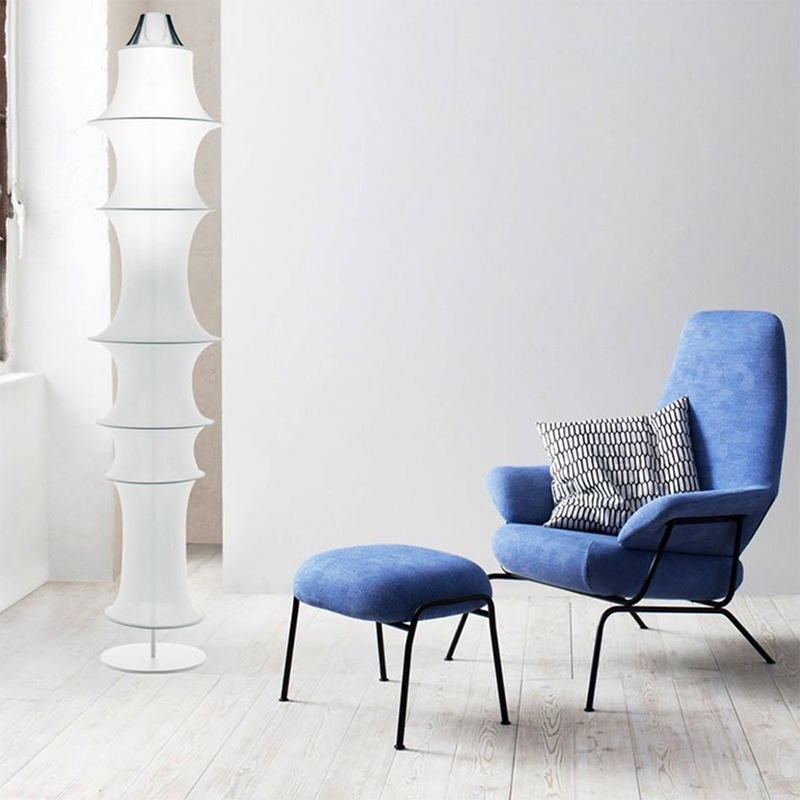







Elastic fabric diffuser, white tubular, natural aluminium structure. The “Falkland” lamp has a tubular structure in aluminium covered with elast... more details
Free in-store pickup
Delivery costs will be calculated during check out, based on your shipping address.
Are you in town? Pickup in our store is always FREE.
Extra EU Shipping
Professionale and B2B
Are you an Interior Designer, Architect or professional? Get in touch for traded pricing, project mnagement and logistic options.
Floor lamp designed by Bruno Munari. The shape is a result of the materials that forms it: the elastic textile adapt its shape to the metal rings.
Elastic fabric diffuser, white tubular, natural aluminium structure.
The “Falkland” lamp has a tubular structure in aluminium covered with elastic material.
It is a spontaneous shape, generated by the tension of the inner forces with which it is made.
When Munari talks about “spontaneous” shape he refers to a part of his research done on natural organisms, in which materials and shapes seem to correspond to the functions they carry.
This lamp corresponds more than the others to the requirements that Munari considers fundamental for a correct design: simplicity, efficiency, minimum storage bulk and maximum return.
It is more than 1.60 m tall but you can fit it in a few centimeters of space: the light filters through the tube, using the texture of the fabric to create a characteristic effect of soft and diffused luminosity.
Bruno Munari is one of the most important art and design leader during the Italian XX century.
I its career he has maintained his own creativity while experimenting on shapes and colors, communicating it through words, objects and toys.
He started his career close to the Futurism artistic movement; he participated to many Futurism exhibitions, like the ones in Galleria Pesaro, Venice Biennale and Quadrennial of Rome and Paris. He then separate from the movement to explore his ideas on shapes and colors and on the aesthetic autonomy of objects.
The “macchine inutili” (useless machineries) are some of his most iconic projects, machineries that investigate humans perceptions, art objects close to optical art.
He founded, together with A. Soldati, G. Monnet, G. Dorfles the MAC (Movement for Concrete Art). From the 1950’ Munari produces the famous concave-convex sculptures, the positive-negative paintings and the tridimensional experimenting models.
Through his career he has been recognized with several awards: The ADI award Compasso d’oro (1954, 1955,1970 and in 1995 to his career), the Japan design foundation award in 1985 and the honorable mention from the Science Academy of New York (1974).